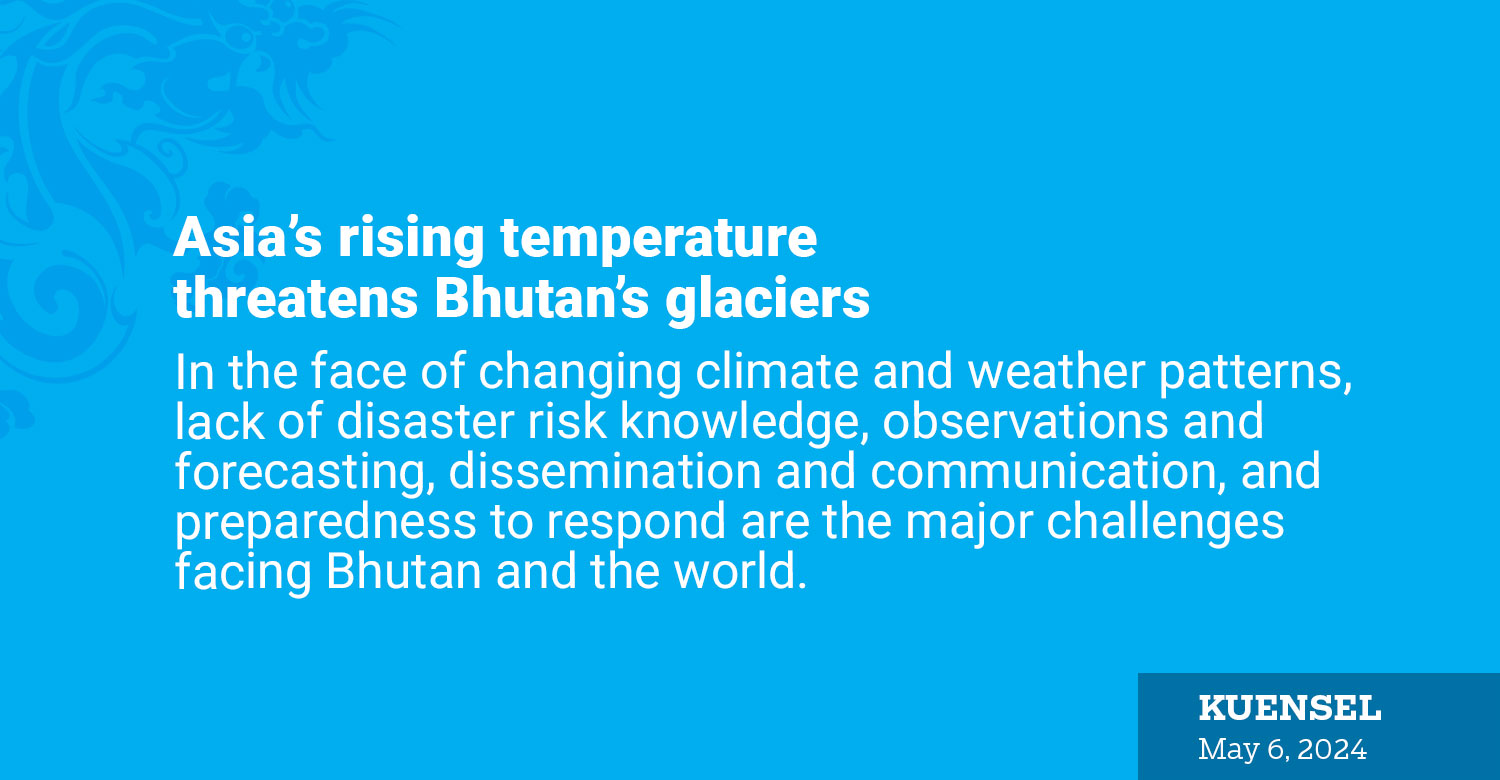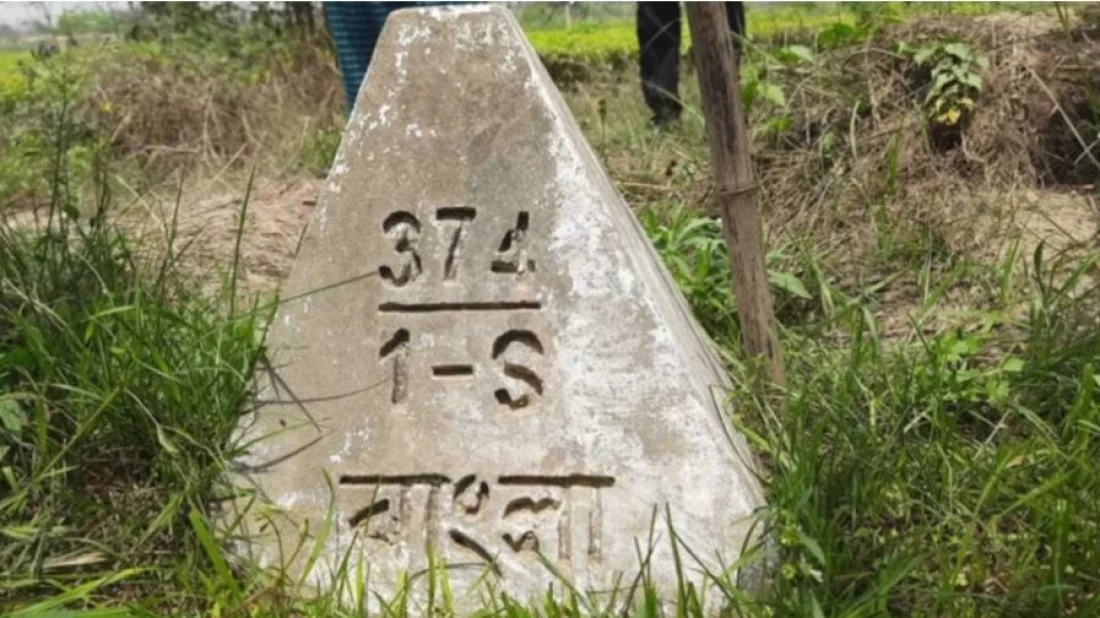
In the face of changing climate and weather patterns, lack of disaster risk knowledge, observations and forecasting, dissemination and communication, and preparedness to respond are the major challenges facing Bhutan and the world.
This is according to the State of Climate in Asia report 2023 which lists Bhutan’s vulnerability, ranking it 38th most vulnerable to climate change threats, lagging at 62nd in preparedness.
Bhutan achieved better score in observation and forecasting. However, the score is low on warning, dissemination of information and preparedness to disasters.
The National Center for Hydrology and Meteorology (NCHM) in Bhutan operates 234 stations and provides critical weather forecasts and advisories.
Principal Hydrology and Meteorology Officer at NCHM, Sonam Lhamo, during the recent ‘Hydro-met science workshop for media’ presented that three benchmark glaciers, Gangjula, Thana, and Shodug, are witnessing glacial water loss in billions annually.
The Gangjula glacier which is the headwater of Phochhu and Punatsangchhu recorded a thickness of 96.4 metres in 2019. In between 2004 and 2020, the glacier lost 30 percent of its ice—which is 6.3 billion water loss in 16 years.
This has caused annual water loss of 369 million litres. The glacier is expected to be lost within this century.
Thana Glacier, the headwater of Chamkharchhu and Manas basin with a thickness of 210 metres is losing 6 billion litres of water annually, which is 7 percent of the glacial ice.
The data with NCHM shows that in between 2016 and 2020, approximately 17 Gigatons of glacial ice is lost.
Shodug glacier, the head water of Thimchhu with thickness of 126.6 metres (2021). The glacier mass balance in between 2021 and 2022 was minus 1,762.29 millimetres water per annum.
According to Bhutan Glacial Lake Inventory 2021, Bhutan records 567 glaciers covering 55.04Km square—Phochhu has the maximum.
Regionally, Asia experienced its second-highest mean temperature on record, soaring 0.91°C above the 1991–2020 reference period in 2023.
To make the matter worse, only 21 countries—which is 60 percent, reported the status of their early warning system on the Sendai Framework Monitoring.
The nine years between 2015 and 2023 were the nine warmest years on record in all datasets.
Based on recorded data, over 80 percent of reported incidents in 2023 were flood and storm events, leading to over 2,000 fatalities and impacting more than 9 million people.
Last year, the mean temperature over Asia was 0.91 °C above the 1991–2020 reference period, the second highest on record.
As per the Global Status of Multi-Hazard Early Warning Systems 2023, only half of the world’s countries are covered by an early warning system.
In the Hindu Kush Himalayan region, the International Centre for Integrated Mountain Development (ICIMOD) has witnessed glaciers in the Eastern Himalayas range rapidly disappearing, losing mass at an accelerating rate.
“Record-breaking temperatures and drier conditions last year exacerbated this loss, with huge implications for sea levels, water cycles, and local hazards such as glacier lake outburst floods (GLOF),” according to the report.












